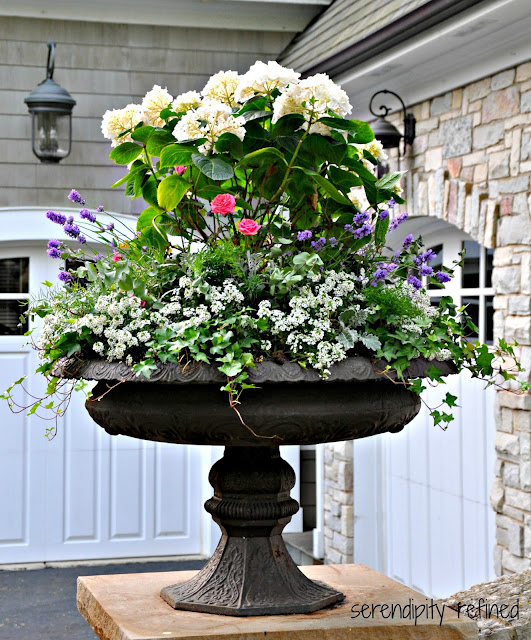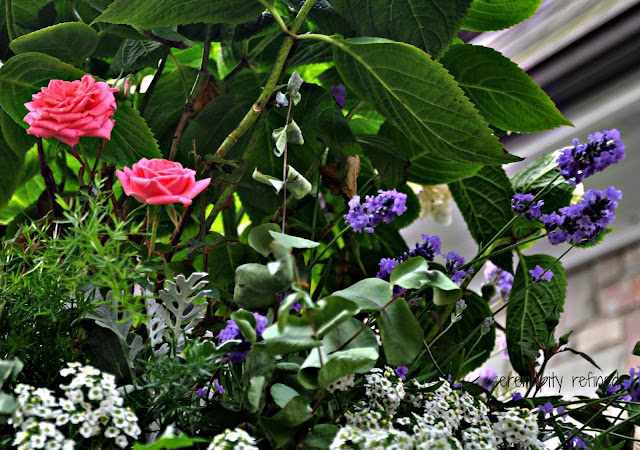I've been designing and planting gardens, urns and planters for over thirty years and my favorites are still That sounds like a really long time, doesn't it?
Sure, my first attempt at "container gardening"was little more than a few marigold seeds carefully planted in a paper cup first grade and gingerly handed to my mom for Mother's Day
but I've been practicing...just a little... since then.
Over the years, I've learned a few tricks that have helped me to be more successful at container gardening and today, I'm sharing them with you.
First: have good planting medium (aka "dirt"). This means, loose soil that has been amended with peat, compost or other organic material that will make it easier for the soil to absorb and hold water instead of becoming rock hard in the heat of the day. This is especially important for South or West facing containers. It's also a good idea to add a long acting fertilizer to the soil before you plant.
Second, pack in the plants! In a nod to my love of European containers, this year I filled my window boxes with alyssum, ivy, dusty miller, asparagus fern, and silver frost. In the urns and containers, I added French Lavender, miniature pink roses and Blushing Bride Hydrangea.
When planting smaller containers, I work from the center, outward but in larger urns, I start at the outside and work toward the center, building a "mound" as I plant so that the center of the planter is higher than the outside rim.
Next, when choosing your plants, don't limit yourself to just annuals. I often plant perennials and small shrubs in my containers and then transfer them to the garden at the end of the season. That way, I get to enjoy them in my landscape for years to come.
The last secret isn't really a secret at all...it's water. Container grown plants need water nearly every day and, in the heat of the summer, more than once a day. Just make certain that your container has a drain hole to allow excess water to escape...I've learned that while plants DO like water, they don't know how to "swim" and they will die from drowning if their roots can't "breathe".
When growing plants in containers, the amount of soil is limited and the roots of the plants can't go deep into the ground to obtain water like they can when they are planted directly into the garden.
Also, certain types of containers (like natural stone, Terracotta, or concrete) "wick" the moisture from the soil when they dry out while others (like my metal urn) become hot in the sun and heat the soil causing the water to evaporate from the soil more quickly
I've found that adding products to the soil that are designed to hold water (such as "Soil Moist" or "Water Grabber") helps. I have a couple of gardening friends who line their containers and window boxes with disposable diapers before they add soil and plant.
From what I've been told, the filler in the diapers absorbs water and then slowly releases it back into the soil as needed. Who knew?!
Thanks for stopping by today to see my summer urns and planters. I hope that I inspired you to try something different in your summer container planters this year.
xo,
Plant list:
In the Urn: Blushing Bride Hydrangea, Miniature Pink Rose (Cupcake), French Lavender, Alyssum, Ivy, Eucalyptus, Asparagus Fern, Dusty MillerIn the Window Boxes: Alyssum, Ivy, Asparagus Fern, Silver Frost, Dusty Miller
In the Urns at the Front Entry: Topiary Eugenia (Myrtle), French Lavender, Alyssum, Ivy, Dusty Miller
In the Large Concrete Basket: Blushing Bride hydrangea, Alyssum, Ivy, French Lavender









